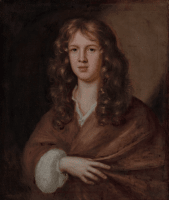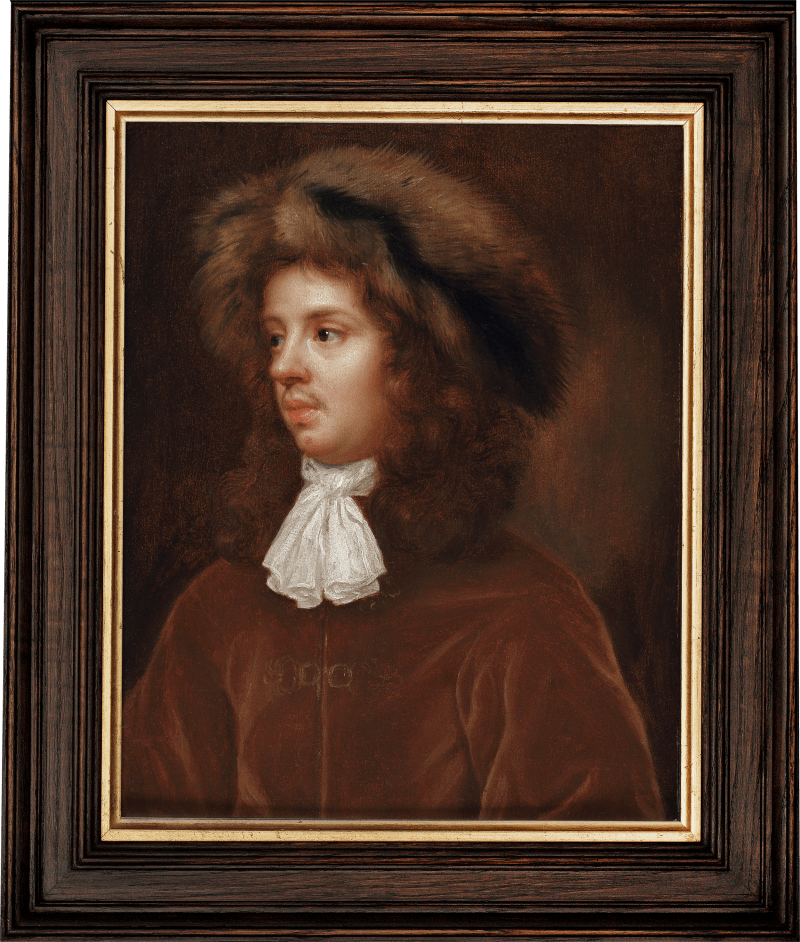Elegantly posed with an intensity of characterisation, this portrait is thought to depict the artist’s son, Bartholomew.
The sitter’s hand, gracefully placed below his heart, is holding a fold of brown drapery. The Beales took a great interest in perfecting hand gestures and produced plaster casts in various poses from which to study. The practice was documented by Beale’s husband, Charles, following a visit from Sir Peter Lely in January 1676–77: ‘We showed him also some of the hands we had cast in Alibaster especially in any of those of my Dearest Hearts in various positions which are cast up to ye elbow & he was very pleased with them and would hardly believe we could cast them so curiously ourselves.’
This painting was historically believed to depict the poet Abraham Cowley (1618–1667). Much like the portrait of Bartholomew’s father, Charles Beale, the misidentification was likely perpetuated by the sitter’s lyrical pose and characterization. The identification of Bartholomew...
Elegantly posed with an intensity of characterisation, this portrait is thought to depict the artist’s son, Bartholomew.
The sitter’s hand, gracefully placed below his heart, is holding a fold of brown drapery. The Beales took a great interest in perfecting hand gestures and produced plaster casts in various poses from which to study. The practice was documented by Beale’s husband, Charles, following a visit from Sir Peter Lely in January 1676–77: ‘We showed him also some of the hands we had cast in Alibaster especially in any of those of my Dearest Hearts in various positions which are cast up to ye elbow & he was very pleased with them and would hardly believe we could cast them so curiously ourselves.’
This painting was historically believed to depict the poet Abraham Cowley (1618–1667). Much like the portrait of Bartholomew’s father, Charles Beale, the misidentification was likely perpetuated by the sitter’s lyrical pose and characterization. The identification of Bartholomew Beale was suggested by Jeffree and Walsh, and the painting was exhibited as such at the Geffrye Museum’s 1975 exhibition ‘The Excellent Mrs Mary Beale’. The choice of sacking as a support material, rather than the more expensive canvas, might well also suggest a close family member or friend, reflecting Beale’s practice of reserving finer materials for commissioned works.
In the 1670s Bartholomew was assisting his mother in her studio, predominantly with the painting of oval surrounds and drapery. By around 1680 he had left the family business to pursue a medical career, entering Clare College, Cambridge, to study medicine and eventually becoming a physician. This period of the seventeenth century was marked by a burgeoning interest in natural science and witnessed the founding of the Royal Society, which promoted experimental and empirical inquiry. The Beales had close connections with the society’s founding members, and it may well have been through encounters with them, in his family home and mother’s studio, that an interest in the sciences was fostered in Bartholomew.











